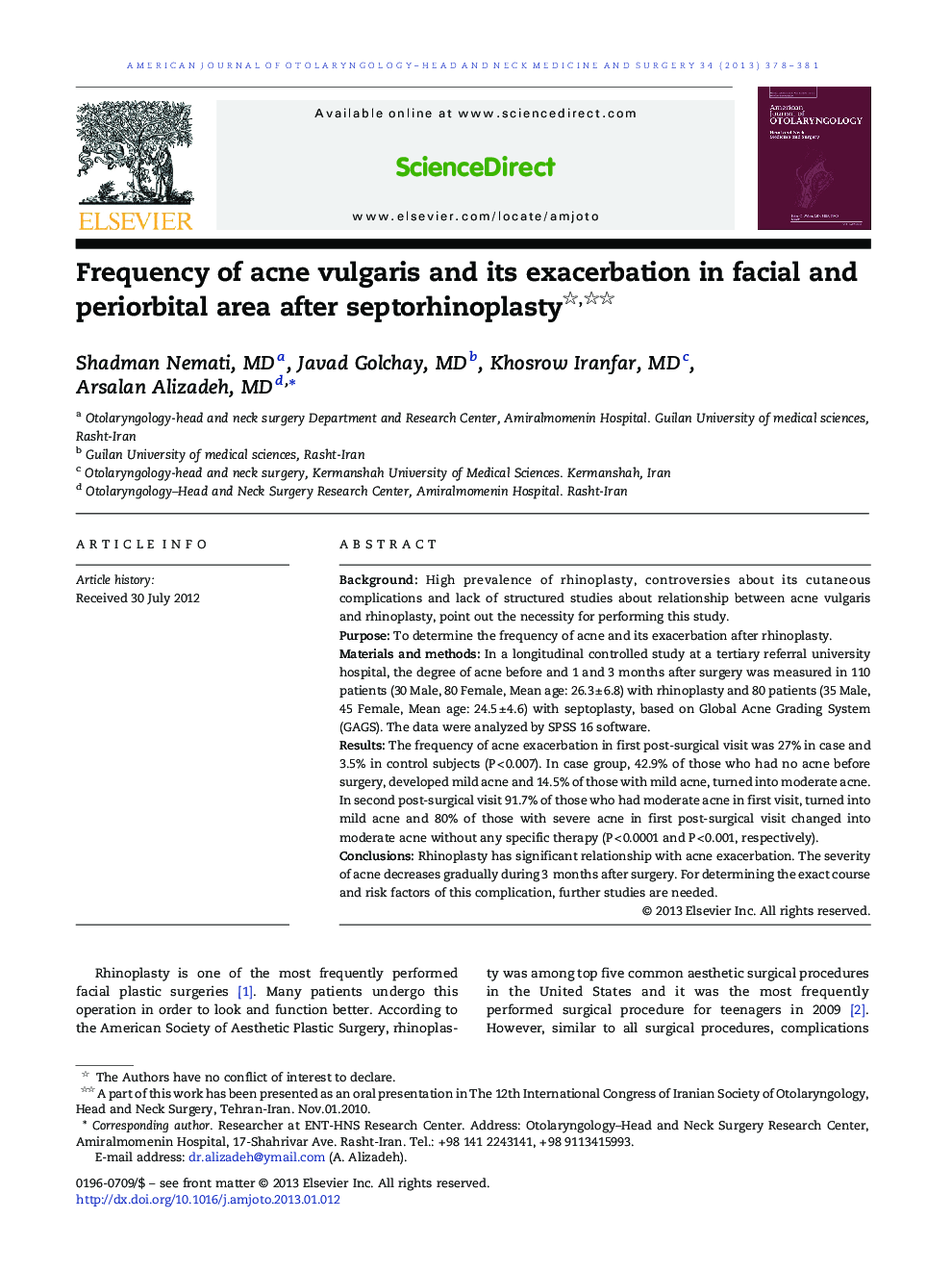| Article ID | Journal | Published Year | Pages | File Type |
|---|---|---|---|---|
| 4103123 | American Journal of Otolaryngology | 2013 | 4 Pages |
BackgroundHigh prevalence of rhinoplasty, controversies about its cutaneous complications and lack of structured studies about relationship between acne vulgaris and rhinoplasty, point out the necessity for performing this study.PurposeTo determine the frequency of acne and its exacerbation after rhinoplasty.Materials and methodsIn a longitudinal controlled study at a tertiary referral university hospital, the degree of acne before and 1 and 3 months after surgery was measured in 110 patients (30 Male, 80 Female, Mean age: 26.3 ± 6.8) with rhinoplasty and 80 patients (35 Male, 45 Female, Mean age: 24.5 ± 4.6) with septoplasty, based on Global Acne Grading System (GAGS). The data were analyzed by SPSS 16 software.ResultsThe frequency of acne exacerbation in first post-surgical visit was 27% in case and 3.5% in control subjects (P < 0.007). In case group, 42.9% of those who had no acne before surgery, developed mild acne and 14.5% of those with mild acne, turned into moderate acne. In second post-surgical visit 91.7% of those who had moderate acne in first visit, turned into mild acne and 80% of those with severe acne in first post-surgical visit changed into moderate acne without any specific therapy (P < 0.0001 and P < 0.001, respectively).ConclusionsRhinoplasty has significant relationship with acne exacerbation. The severity of acne decreases gradually during 3 months after surgery. For determining the exact course and risk factors of this complication, further studies are needed.
